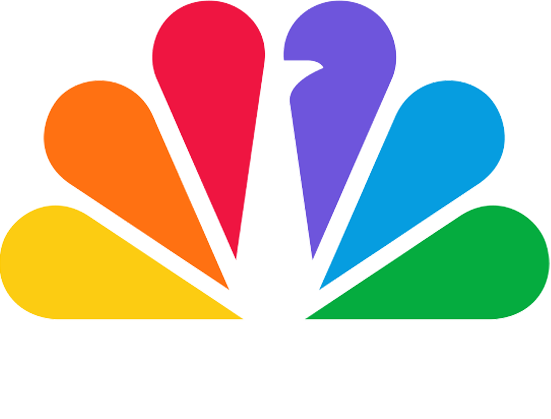WHEN: Today, Tuesday, October 17, 2023
WHERE: CNBC’s “Squawk on the Street”
Following is the unofficial transcript of a CNBC interview with Bank of America Chair & CEO Brian Moynihan on CNBC’s “Squawk on the Street” (M-F, 9AM-12PM ET) today, Tuesday, October 17. Following is a link to video on CNBC.com:
All references must be sourced to CNBC.
SARA EISEN: Shares of Bank of America moving higher after topping profit estimates, thanks to better-than-expected interest income. But the company did report unrealized losses of $131 billion on securities held until maturity in the third quarter. That continues to be a talking point growing from the $106 billion in paper losses in the second quarter, Bank of America one of the worst-performing bank stocks this year, down about 17 percent. Let’s talk about all of this. Joining me now fresh off the earnings call is Bank of America’s chairman and CEO, Brian Moynihan. Welcome back, Brian. Good to see you.
BRIAN MOYNIHAN: It’s good to be here. Thank you for having me.
EISEN: So, on the quarter, I’m going to highlight it, 10 percent rise in profits, thanks to net interest income and net interest margin. And you raised that forecast on NII. How sustainable is this kind of growth?
MOYNIHAN: Well, it’s sustainable because we have 200,000 teammates who go to work every day and do a great job for our customers and clients. And so what drives our net interest income is our deposit base, which is the best in the business. And you’re seeing the stability and growth in the commercial side of the house. You’re seeing stability in the wealth management side. In the consumer business, consumers still spend down, but a very stable, very profitable customer base. And so, as you think about that, that goes, loan growth this quarter was slow. We expect that to pick up as the rate cycle normalizes. And that led us to say that we had more NII this quarter, third quarter, than we thought we’d have back a few months ago. We held a $14 billion estimate for the fourth quarter. And we said it will sort of trough at that level, and then to start to grow in the second half of the next year. And that’s because the great performance by the team.
EISEN: And deposit costs are a factor there, they’re rising. It looks like they were a little higher than expected and higher than competitors. Are you taking share? And where does that go?
MOYNIHAN: Deposit costs are 150 basis points all in for $1.9 trillion of deposits. And deposits grew a little bit. So, basically — and we have $500 plus billion that are no-interest-bearing transaction accounts. So, the deposit cost all in is really driven by the mix of deposits at a given moment. And at the end of day, we have $1.9 trillion of those that represent our customers and clients’ money that they’re using to conduct their daily business. The money that was on the investment side, that is more investment-oriented, has moved into the markets. And, that, you can see happen in our wealth management business over the last several quarters, but it’s stabilized now. And so our deposit costs are derivative of the makeup, and then consumer, where you get really have your good core transaction accounts, the all-in costs are 34 basis points, which is a very strong cost, deposit cost, given the transactional nature of that business.
EISEN: And what is happening, Brian, with the consumer? We got a surprisingly strong retail sales report. You in the past year have been sort of leading the message about the strength in the consumer, which has been true. But is it fading? What’s happening here?
MOYNIHAN: Well, the retail sales number came out stronger. And, sometimes, that bounces around. But if you’re focused on what we see, so, in a given year, we will have $4 trillion-plus of our consumers moving money out of their accounts to do something, using a debit credit card, writing a check, taking cash out and spending it, sending money with Zelle, etc., so $4 trillion-plus a year. In 2021, that grew over — to 2022, growth rate was 10 percent, 9 percent to 10 percent. In the early part of this year, ’23, first quarter over last year’s first quarter, sort of say 9 percent. It’s now down to 4 percent, a little over 4 to 4.5 percent. That has held true in the month of September and also in October. That growth rate, to put it in context, is consistent with where we were in ’16, ’17, ’18, ’19, which was, what, a low-growth, low-inflation economy. So, the consumers’ activity has slowed down. It moves around from which category but across $4 trillion, 37 million checking customers, it’s slowed by half. And that means the consumer is being slowed down by the interest rate environment and all the stuff going on. The good news is, they’re employed. And then, if you look in their accounts, you can see that they, in the median-income households that have lower balance accounts, they’re spending down that excess balance. It’s still multiples of pre-pandemic. In the higher-income households, the higher balance households, they have already moved the money into the investment side. But you’re seeing that deterioration of deposit balances in consumer in those median-income households down a little bit. That means they’re spending some money in excess of what they bring in. And so that means the economy has slowed down, consistent with a low-growth, low-inflation economy. I think that will play through the numbers. This is real-time data, as opposed to lagging data, so we can see this every week. And the first part, first 13 days of October look a lot like September, which was sort of 4 percent.
EISEN: So does it make you think that we are closer to going into recession at this point, or as long as the tight labor market holds up, we can avoid it?
MOYNIHAN: Well, the labor market is, if people are employed — and the unemployment rate is still very strong compared to historical norms, but you have even seen some of the job openings and stuff have fallen. You’re seeing more employee movement by companies. And so I think, if you look at all that, WARN Act notices are up, and all this stuff means that the labor market has softened a bit, and wage growth is starting to slow. Our core prediction by Candace Browning-Platt, our research group, is to not have a recession. In other words, we’re going to have a slowing economy, troughing in the middle two quarters of next year at about a half-a-percent annualized growth, slowing down almost to zero, then working its way out, and it takes all the way to the end of ’25 to get back to trend growth, i.e., 2 percent. And also, inflation, they have three cuts next year by the Fed, and then four cuts the following year, ’24 and ’25. That still leaves the Fed Funds Rate around 4 percent or so at the end of ’25. But they have inflation then getting in line all through that period. So, the higher-for-longer debate, I think you have to put that in a historical context. You know, 4 percent two years out now is still a higher for longer, but it’s a rate structure which doesn’t move a lot from where we are now.
EISEN: Got it. Well, you did set aside more provisions for bad loans tied to credit cards, Brian. What are you seeing there as far as stress? And what’s the expectation?
MOYNIHAN: We’re not seeing any stress. Our credit card charge-offs and delinquencies are where they were in 2019. And, as best we can tell, the overall credit in 2019 was a 50-year low for the company. And so we’re talking about normalizing to a level that is very strong. In the credit card business, the reason why you put up provisions is, we grew the book of business. And so we’re basically back up to almost levels of loans. And so, as you grow loans, under the CECL methodology, you have to put up the reserves ahead of time. Whether you have to use them or not is a whole separate question. And so we had to put up those reserves on the consumer side. Meanwhile, we had releases on the commercial side, and we feel very good about that. But overall credit costs, at 30-odd basis points, are sitting at 50-year lows, except for what we saw in the pandemic, when all the stimulus and stuff changed the picture. So, ’18 and ’19 were extremely good years for credit in the history of banking, in the history of Bank of America. And we’re only getting back to that level now.
EISEN: Alright, well, that’s good to hear. What inning are we in, in terms of these higher provisions?
MOYNIHAN: Well, I think our provision of the P&L in the quarter is driven up by a little bit by the charge-offs, as they normalize, and then by reserve build for growth. And that’s a good thing. If we’re building reserves for growth, and we want to grow loans, we go out there every day and have thousands of people try to grow loans, and the loan demand is not that strong, again, the Fed having gotten into the commercial side of the house in lowering loan demand. But, at the end of the day, I think you will see us sort of bump around at this level now, maybe go up or down a little bit, but it’s largely going to be driven by the forward path of the economy. The reserves we have set are set on a methodology, which is 60 percent base case, 40 percent adverse case. And if you think about that, the way to make people understand that relatively straightforward, is that assumes we get to 5 percent unemployment rate, which is no one’s economic assumption. So it’s a very strong reserve position for our company.
EISEN: Brian, I mentioned the stock price at the top. The price to tangible book gap between you and J.P. Morgan has widened recently. What do you think is driving that? And how do you close that gap?
MOYNIHAN: Well, we close that gap by just driving the kind of performance like we did today, $7 billion-plus, 10 percent earnings, 10 percent growth year over year, 15 percent return on change with common equity, the amount of equity we need for the new capital rules already in the house and returning 15 percent. So there’s not a conundrum, how are you going to get returns that level if you have a cap RWA increase. We already have the $194 billion. The requirements, as stated now, would be about $195 billion. So that’s what drives it. And our job is to keep driving the earnings, and the stock price will reflect that over time. And while we fared well up in ’21, it’s been bouncing around a little bit now. And now our job is just keep driving the earnings and, frankly, use our excess capital for dividends and growth and share repurchase when the time comes.
EISEN: But you know that the market has been very fixated on these held-to-maturity portfolio that you have. And, obviously, those unrealized losses did gain from $105 billion to $130 billion. Should the market be concerned about this?
MOYNIHAN: No. At the end of day, that comes from the $1.9 trillion deposits we have and only a trillion dollars alone. So, basically, two years ago-plus, we made a decision to put some of that money to work. And we basically split it into two pieces, a short-term piece and a long-term piece. So, in the aggregate, 47 percent of our securities in cash we hold is in really short-term, overnight type of investments, and 53 percent’s long-term. And that’s in the held-to-maturity portfolio, because those marks we knew would come, and we then don’t have to take them through capital. And they pulled apart. These are government-guaranteed securities. So the team’s done a good job of managing. And, in fact, our NII grew this quarter faster than we thought. We upped our guidance, as you said earlier. And that’s because the securities yield of all that activity extracts the value that deposits for our shareholders and continues to grow.
EISEN: So, I just want to understand it, because there’s a lot of mixed opinions. Is there any risk that you would have to mark these to market?
MOYNIHAN: No.
EISEN: No risk? Because you have the capital positions. What about the concerns around the fact that you’re under-earning because of it, relative to J.P. Morgan, which has a more liquid balance sheet? So they don’t have the underwater securities. They can reprice here with higher rates. Is that valid?
MOYNIHAN: About $11 billion rolled out of the long-term bucket into the short-term bucket. And, right now, it’s, yes, with cash at 5.5 percent-plus — putting money in cash is a great investment. Over time, that will change as rates come back down. But, right now, we will see over the two years since we peaked this portfolio, and we have made investments in it since 2021. We have seen the balances in the long-term side in the mortgage basket down $80 billion. And all that money has been put to work in the short side. And so that’s a pickup of a couple hundred basis points of yield. That’s why we think, as we can move through next year, our NII actually starts to grow mid next year after we set this $14 billion trot. That is different than a lot of people, because we have positive momentum behind it, a great core deposit franchise, and a loan book that’s strong and high credit quality, but, on top of that, a constant repricing or a balanced sheet up. And you saw that even this quarter as the yield on all that went up again.
EISEN: Alright, well, I think that clears up some of the confusion there. What about investment banking, Brian? What does the pipeline look like there?
MOYNIHAN: The pipeline remains pretty strong. And so we have got to have stability in the market, and then some of that will come to market. So you’re seeing some offerings get done. You’re seeing some deals get announced. And so the pipeline, the team did a good job. In a market where the fee pool is down 30 percent or 20-odd percent year over year, we were basically flattish. Matthew Koder and the team have done a great job, this is on investment banking, capital market side, maintaining our share and actually gaining share by about three-quarters-of-a-percent. So they’re doing a good job. One of the highlights in there is that we made a decision about three years ago, two years ago to say, we need to dedicate more investment bankers into the middle market of America and this huge middle market franchise we have. We doubled the size of that group. And, there, that business is more consistent and less driven by big deals. And so that we’re seeing being a bigger share and putting a good base under it. So, a billion dollars in change of investment banking fees used to be a good quarter, but now, way up to $2 billion, it doesn’t feel so good. But that underlying base is strong. And, yes, the future pipeline is strong. And we just got to have stability, so deals get done, and then you will see that kick up relatively quickly.
EISEN: I’m not sure we have stability, though. Brian, the world changed again about 10 days ago with the terrorist attacks in Israel. And I wonder if you see any change in behavior in capital markets, in clients, in decision-making just around this increased geopolitical tense environment.
MOYNIHAN: It is a very difficult time to assess the geopolitical risks, so-called, in any industry, including our industry. And so how we have done that is how we keep the book balanced and stuff. We have teammates in Israel that we have made sure they were safe. We have people affected by it all over the world with a war going on. And it’s pretty clear that we have to be careful of those things. Right now, the markets absorbed it relatively without moving around too much, bouncing around, some here and there. But I think let’s remember this is a huge human issue. The markets will absorb it or not absorb it, and we will react to that, and we will manage our company well. But we have got to keep all the people in our hearts and prayers here to make sure that this thing comes to a quick resolution, if it can.
EISEN: A hundred percent. Does it change anything about what you do, your strategy, the way you look at the world right now, given all these increased risks?
MOYNIHAN: Well, we always — that’s why we drive our responsible growth. So, in 2014, after the invasion of Crimea, we changed our position in Russia. We look everywhere and are always rebalancing our book. Well, we have grown our international presence from about $20 billion in outstanding loans to $100 billion. And Bernie Mensah leads that force. And Jimmy DeMare leads the trading business around the world. Yes, they have done a great job of growing that business. But we have a great risk management team and a great line of business team that look at that every day and say, ok, how do you take it? And, look, in the period of volatility until we had in the third quarter around these issues around the world, Jimmy and — DeMare and the trading team made money every day. And that’s how you manage the risk…
EISEN: Yes.
MOYNIHAN: … is just being very aware and not getting too long in any one place.
EISEN: Well, it really gets us to today’s story, which is the 10-year note yield. We’re back up in the 4.8s, moving higher, this relentless rise in yields. I wonder how you’re looking at it. You could argue that now should be a time for safe haven, with the slowing growth, that you would see lower Treasury yields with the Fed coming to the end of the hiking cycle, you would see lower Treasury yields. But it’s been the opposite. What do you think is driving it? And how far do you think we go here?
MOYNIHAN: Well, I think it seems to be we’re bouncing. The 10-year yield moving 10 basis points is kind of a lot of volatility in historical context, because it used to move a basis point, and everybody would get excited on a day. So, there’s a lot of volatility around a lot of positions being evinced, is it a safe haven, it comes down. There could be with the debt and the worries about the debt and all those types of things, it goes up, with the volatility around the world. So I think we’re in a range here it seems to bounce between 4.6 and 4.8 to 5 — almost up to 5, and then back down. None of that really affects the world that much. What affects the world more in terms of pure economic sense is the short-term rate structure, which has had the impact the Fed needed to have. It slowed down housing. It slowed down car purchases to some degree. It’s — the cost of debt will slow down. It’s slowing down the consumer, because money’s being reallocated there. But companies are being more conservative on the usage of debt because of the higher rate structure. So, loan balances are down and loan demand has been down a lot, and financial conditions for lending are much tighter. That’s the effect of the rate structure that’s felt most quickly. But the idea of what the tenure is on a given day will bounce around based on people’s views of the overall safety and soundness of the world and the U.S. Treasury’s capabilities to pay everything else. But I don’t — from an economic perspective, the short-term rates have a much bigger impact in the near-term.
EISEN: Yes, well, they’re high too. Finally, Brian, your colleagues have been unusually outspoken about the Basel III Endgame rules speaking out against it. How will they impact your bank’s competitiveness and, do you think, the industry if they are set to go through?
MOYNIHAN: Well, as we told people today, right now, we have $1.63 trillion in risk-weighted assets. The expected outcome of the rules as proposed now, which would be finalized next year and be effective in the middle of ’25 and give you to ’28 to phase in, would require us to have $1.95 trillion of risk-weighted assets. Today, we have $194 billion of capital, and our requirement would be 10 percent. So, we basically have the capital in the company and earning 15 percent of what we need to comply with the rules. That being said, I think there’s a lot of debate about the wisdom of some of these rules, whether it’s the increased RWA for mortgages, the increased RWA for these tax investments for solar and wind and other things. There’s a lot of debate about double-counting, and so our industry and our company are going to comment heavily about this. And you’re seeing debate even among the Fed governors about the wisdom of it. So, I think there’s still some turns in the track to go through with all this. But I think, at the end of the day, I have always said, if you give us a set of rules, we will adjust the business. But the impact of these rules will be less lending capacity in the American banks, which are the strongest banks in the world, and less fuel for the U.S. economy to grow on. And people have to be careful about making those decisions, because, at the end of the day, that $300 billion of increase in risk-weighted assets could have been loans we could have made that would have helped the economy grow. And we can’t make them, because we can’t take any more risk on that risk-weighted assets because it’s deemed to be there, even though the risk in the company hasn’t changed. So I think we have to be very careful about the impact of these rules and the competitiveness of the U.S. against other people. But the real impact in the U.S. is, midsized companies and small businesses will have a higher cost of borrowing, which is not good for the U.S., without really a clear indication that the risk of the lending we all do as an industry has changed. And that, to us, we question that, as an industry and as a company.
EISEN: Yes, I mean, unintended consequences. Well, we will continue to follow that one. Brian, thank you very much for taking the time to talk through all of these results and what you’re seeing at Bank of America. We appreciate it.
MOYNIHAN: Thank you.
EISEN: Thank you, Brian Moynihan.


















